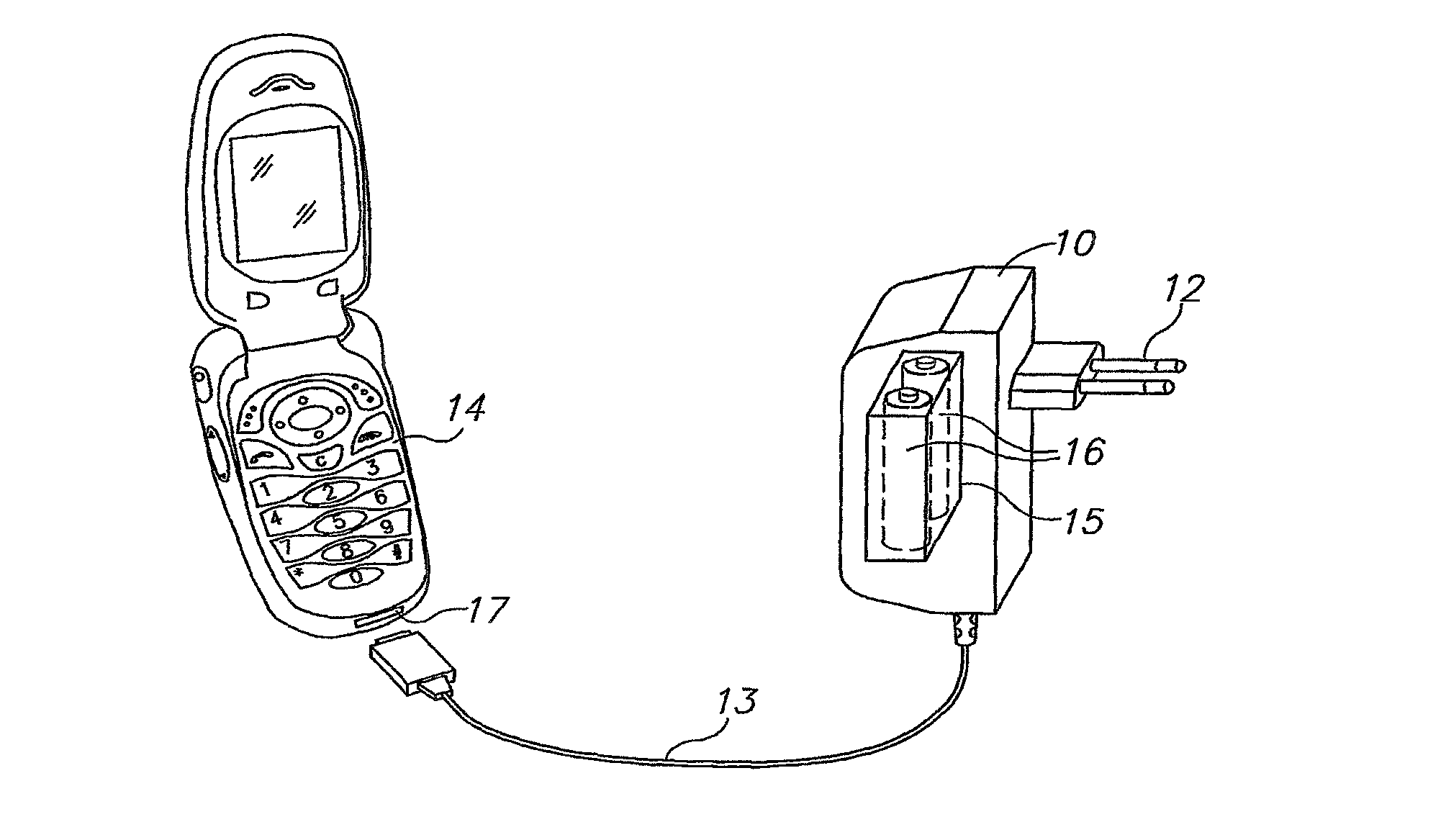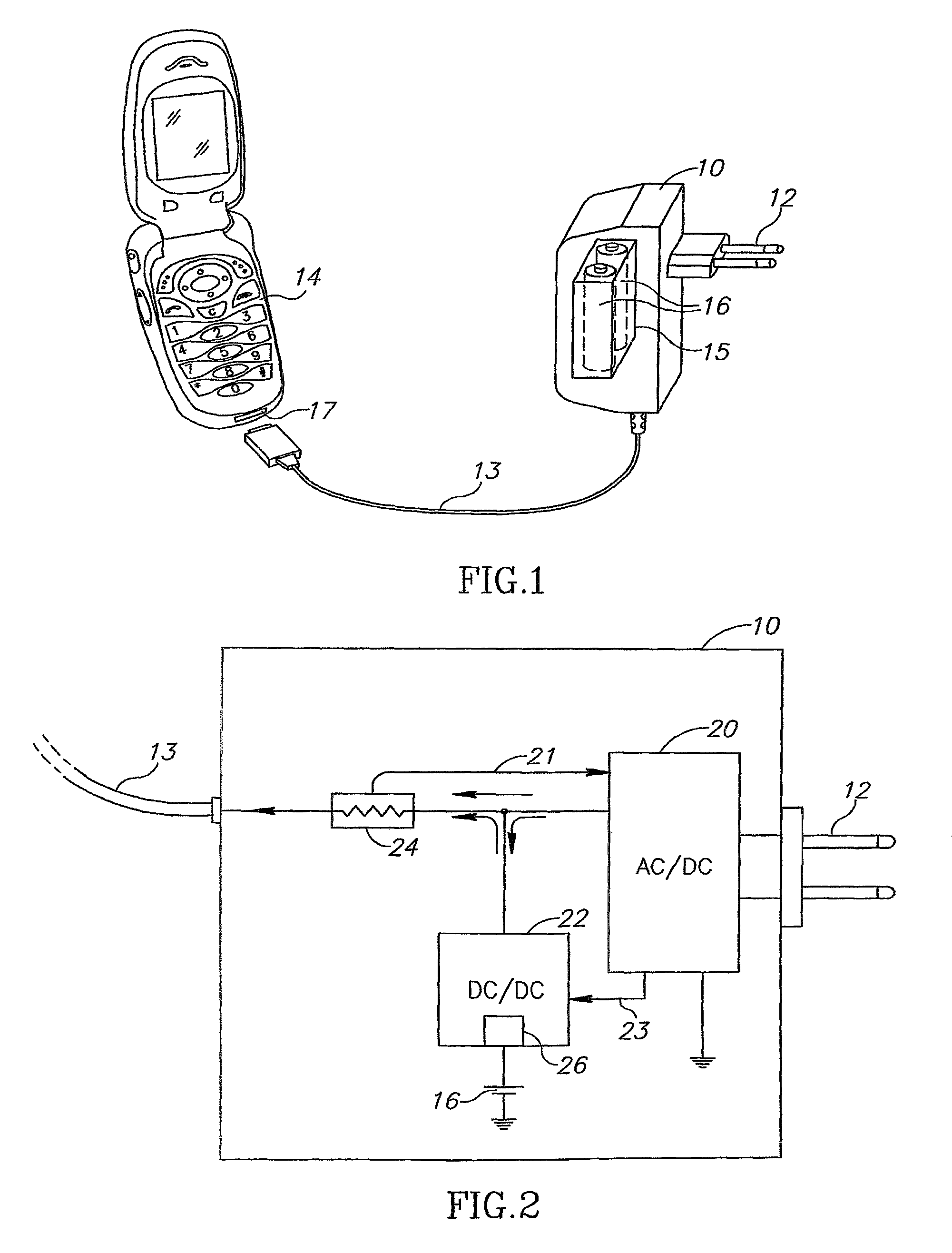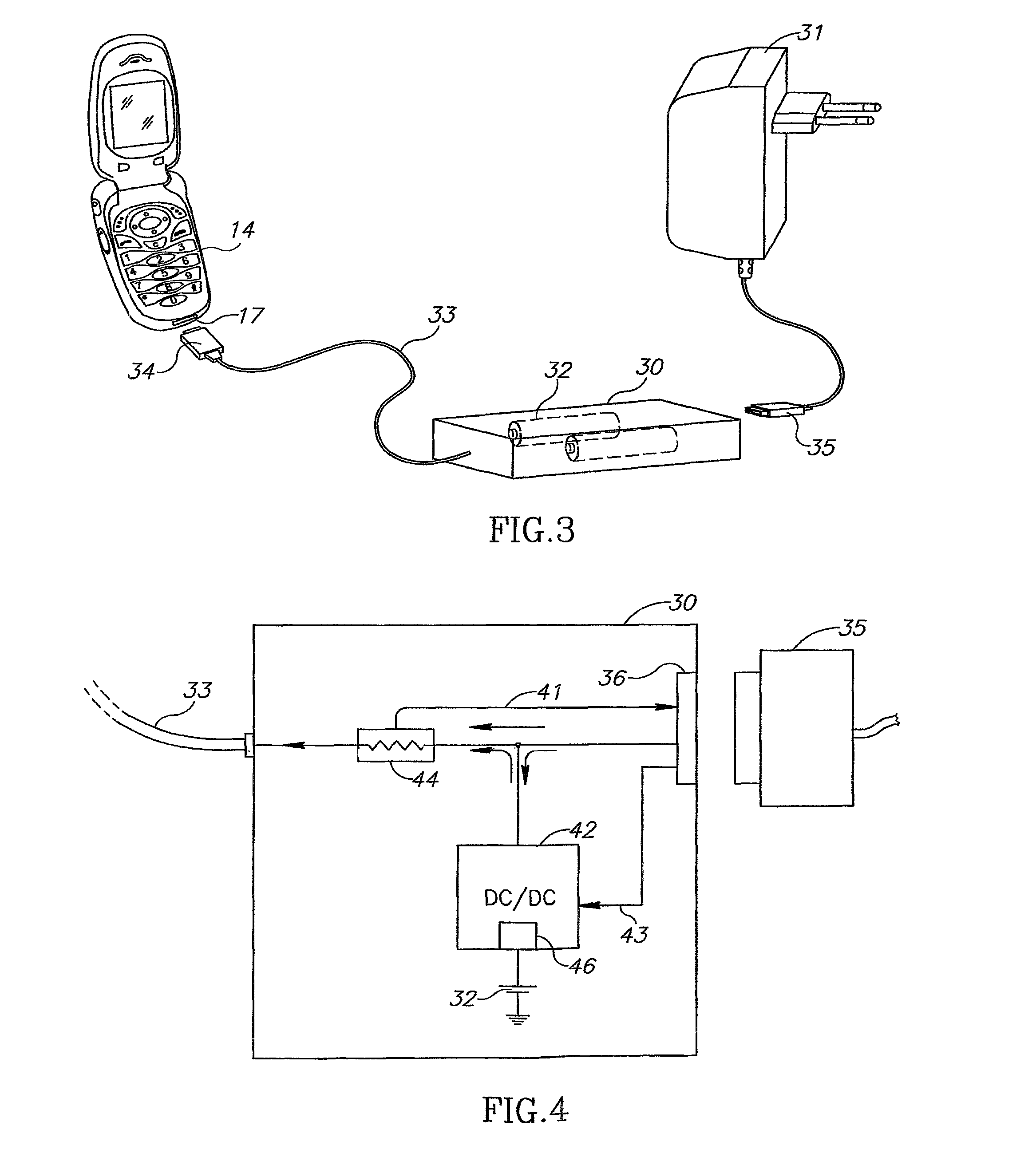Battery powered charger
a battery-powered charger and charger technology, applied in the direction of battery load switching, electrical equipment, electric vehicles, etc., can solve the problem of the possibility that the primary cell being charged therein may fail catastrophically
- Summary
- Abstract
- Description
- Claims
- Application Information
AI Technical Summary
Benefits of technology
Problems solved by technology
Method used
Image
Examples
Embodiment Construction
[0032]Reference is now made to FIG. 1, which illustrates schematically a wall charger 10, constructed and operative according to a first preferred embodiment of the present invention, The wall charger preferably has conventional power pins 12 for inserting into a wall socket (not shown), though it may also use a conventional plug on the end of a flying lead cable, or a push-in plug for use with a cigarette lighter socket in a car. A cable 13 provides connection to a mobile telephone 14, used as an example of a portable electronic device which can be charged by the wall charger. The output may equally well be provided in the form of a cradle in which the phone or other electronic device sits without a connection cable. The wall charger 10 differs, however, from a conventional wall charger in that it also contains a battery cavity 15, inside of which can be installed one or more cells or batteries 16, which are preferably secondary. Alternatively and preferably, primary cells or batte...
PUM
 Login to View More
Login to View More Abstract
Description
Claims
Application Information
 Login to View More
Login to View More - R&D
- Intellectual Property
- Life Sciences
- Materials
- Tech Scout
- Unparalleled Data Quality
- Higher Quality Content
- 60% Fewer Hallucinations
Browse by: Latest US Patents, China's latest patents, Technical Efficacy Thesaurus, Application Domain, Technology Topic, Popular Technical Reports.
© 2025 PatSnap. All rights reserved.Legal|Privacy policy|Modern Slavery Act Transparency Statement|Sitemap|About US| Contact US: help@patsnap.com



